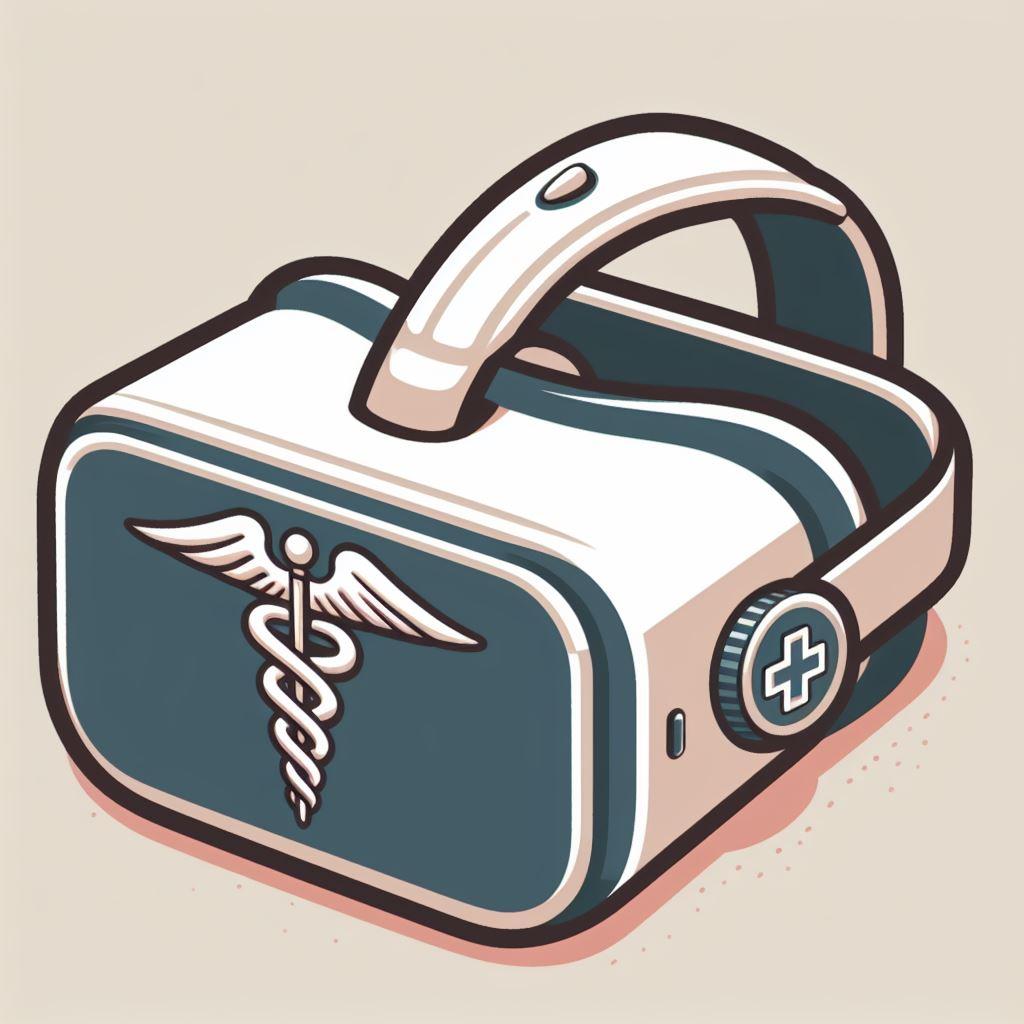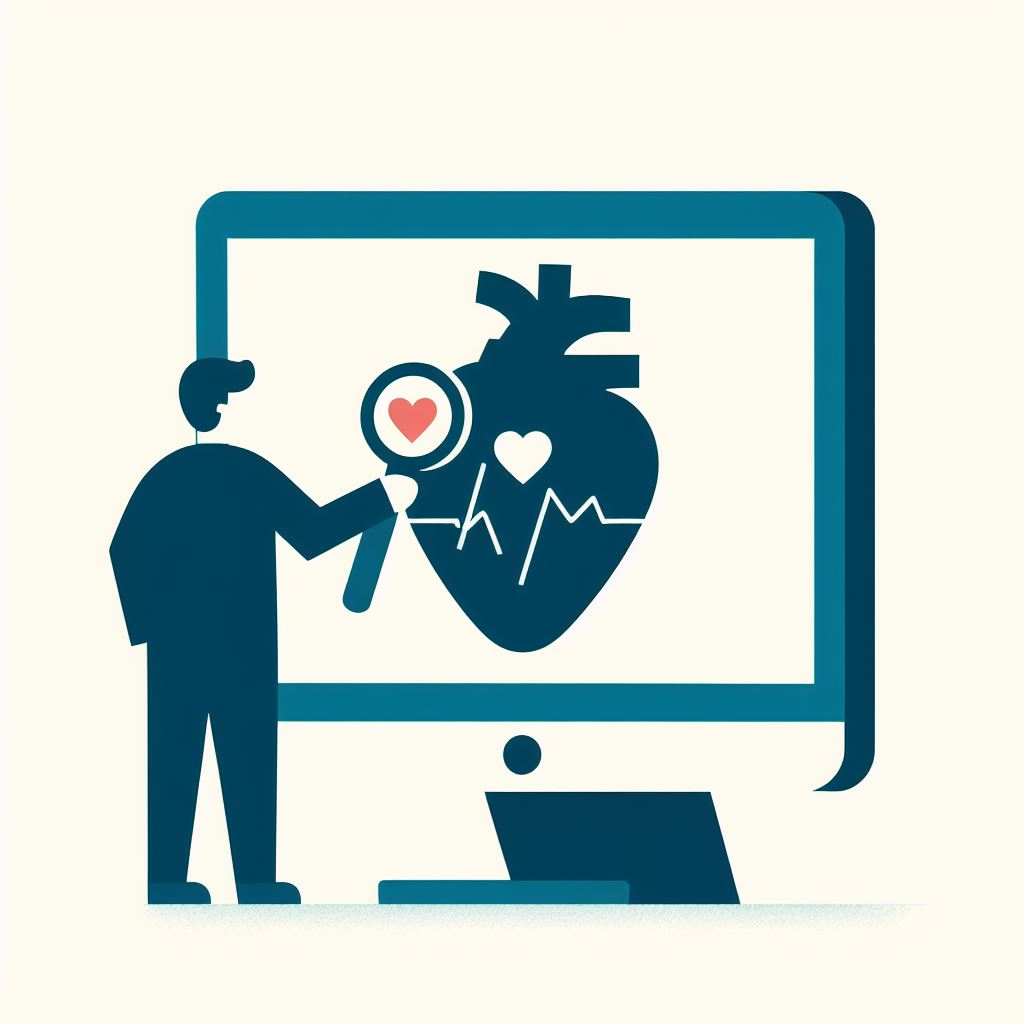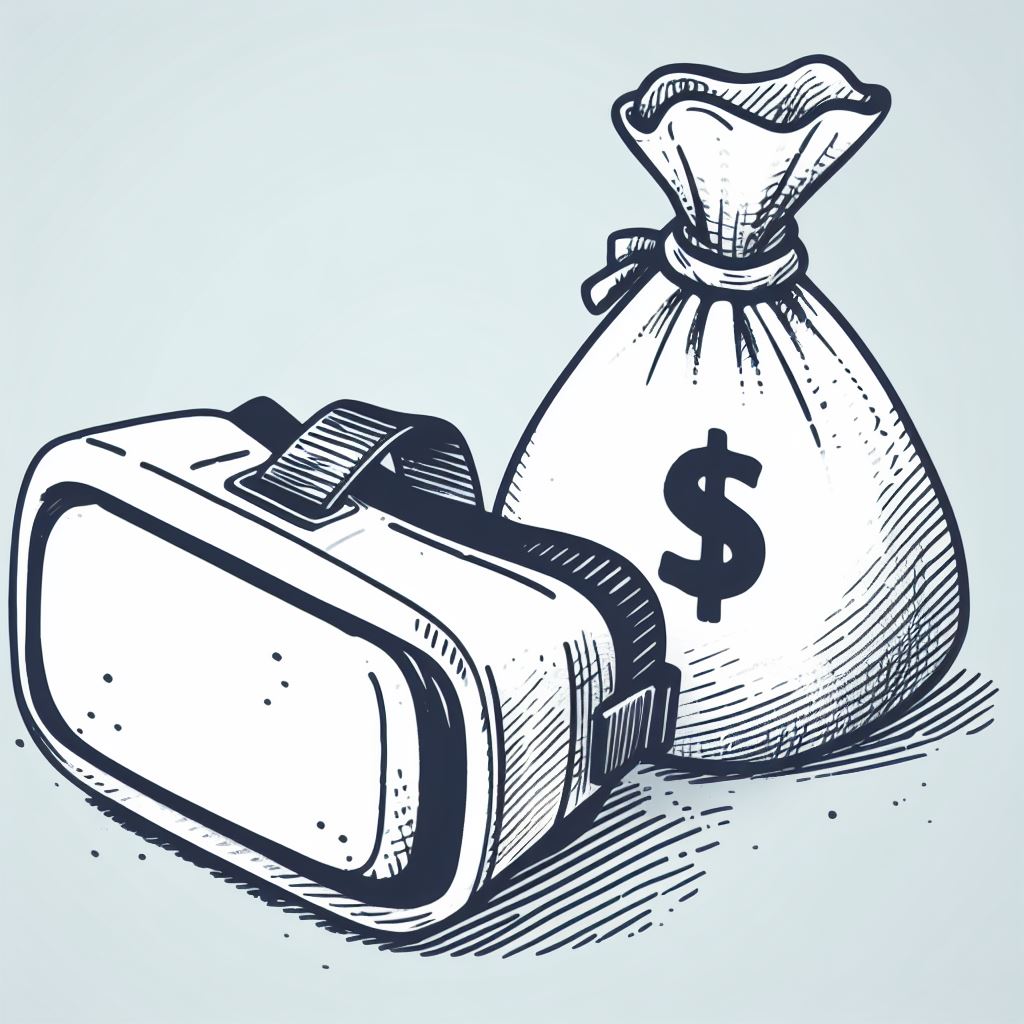
VR in medical training
Virtual reality headsets, or VR headsets for short, are becoming increasingly popular. As early as 2022, sales of VR hardware amounted to USD 8.83 billion worldwide and forecasts predict an increase in volume to USD 30.3 billion by 2027. For many observers, virtual reality is still firmly associated with leisure and recreational activities, especially gaming. Nevertheless, the technology has long since made the leap from the realm of pure entertainment electronics and is increasingly being used for productive purposes. According to a recent survey, 13% of all users surveyed stated that they had already used VR for educational and learning projects, while 8% had already used it in a professional environment.
It is therefore not surprising that more and more reports are emerging about how employers are trying to use the technology beneficially to train and empower their own employees. The possible use cases are diverse: from substitute measures for people who cannot attend physical meetings to sophisticated team-building measures.
But more specifically, what about virtual reality in medicine? How can modern technology be used in this highly sensitive field? Are there tangible benefits that analog training measures cannot offer and are there perhaps even success stories that prove the usefulness of such measures?
VR creates better learning outcomes

It may sound surprising for a comparatively young phenomenon such as virtual reality, but the positive effects on human learning behavior are already scientifically well documented - both in general and for the medical sector in particular.
Studies show that VR in such a learning and training environment leads to up to 70 percent higher engagement rates compared to traditional methods and that the learning content is also better internalized. This effect is no coincidence; the reasons for this can be explained by neuroscience: our brain organizes information spatially in a kind of "mental map". A spatial learning environment, such as virtual reality offers, therefore helps immensely to consolidate such information through the visual, immersive and interactive presentation. The underlying principle behind this is called "autobiographical memory". This learning method has proven to be particularly effective for doctors and medical staff, as they are not simply observers, but have already rehearsed the actions that will later be required in practice.
However, it is not only the learning effects that are positive, but also the motivation to learn. Julius-Maximilians-Universität Würzburg conducted a representative study this year (2023) in which the university's own program on VR teaching methods was comprehensively evaluated. The results of the study not only confirmed the improved learning outcomes, but also showed that acceptance among students for VR-based courses is particularly high. This even applied to those who are rather critical of the technology. This is a factor that should not be underestimated, as operating problems with and skepticism towards new technology can be decisive for the success or failure of its establishment. The result therefore speaks in favor of the intuitive and easy operation of virtual reality applications.
The results from JMU are not an isolated case. Other universities and university hospitals have also developed their own research programs in this area. The UKE Hamburg, for example, states that it initiated its own pilot study on the subject back in 2019 and also came to the conclusion that VR can significantly improve learning gains in the area of cardiopulmonary resuscitation compared to conventional methods. Based on these promising results, the UKE says it is currently working on an improved version of the software and is planning further studies to evaluate it.
However, it is not just hospitals where VR is being used to train specialist staff. The care sector is also reporting its first practical applications. Training units in virtual reality have been an integral part of the training program for trainees at the Helios Clinics Group in Wiesbaden since the start of 2023. Here, too, the previous impression was confirmed that this teaching method meets with a very positive response from the trainees and produces better learning outcomes. This case study also demonstrates the flexible roles that VR can play in a medical context and that the technology is by no means limited to university hospitals and operating theaters.
VR is detailed and flexible

However, the direct effects on learning motivation and success are not the only factors that are giving virtual reality an increasing boost in medicine. Computer programs allow us to simulate perspectives and actions that would not be possible in the real world. Just as some gamers start a fantasy role-playing game to explore a mysterious world as a magician, which is of course not possible in reality, VR in a medical context allows its users completely new opportunities that are not possible with any other training method.
One example is the adoption of new perspectives. A living example of this is the simulation used at Stanford University in the field of neurosurgery. Students can literally get up close to a digital brain through their VR goggles and manipulate it as they wish - a bit like flying through a real-life human brain. "The beauty of it is that you can see what the structures look like in three dimensions," says a professor at Stanford University, describing the experience.
There are also recent reports that this high level of detail and immersion has already been put into practice. Dr. Jake Shine, an orthopaedic surgeon at the Kettering Health Dayton clinic in Ohio, performed a successful shoulder surgery this year, for which he had previously prepared intensively using VR training. Dr. Shine first simulated the procedure point by point in the clinic before taking his headset home for further preparation. "Anecdotally, I think it went smoother and quicker than it would have, [than if the attending physician] was having to walk me through every step in the case the same way that he did in the VR," he later commented on the successful surgery to the press.
Dr. Shine's individual impression can hardly be dismissed as purely anecdotal. Back in 2019, VR training methods in the field of orthopaedic surgery were scientifically tested at UCLA with a group of students. The result: in a test operation on an artificial bone model, the group prepared with VR was able to complete the procedure 20 percent faster and completed 38 percent more steps correctly in the procedure-specific checklist than the conventionally prepared test group. Overall, the VR group achieved a 230 percent better result on the five-point evaluation scale set up for the study. Against this background, Dr. Shine's case can therefore be seen as the first successful transfer of VR training from a test environment to a real operation.
Focus on the individual

However, the potential uses of virtual reality in medicine are not limited to preparing medical staff for their future tasks. There are already initial field trials in which the focus is on patients and VR headsets are used as a therapy supplement.
The approaches and areas of application are diverse. The Georgia Institute of Technology, for example, is using VR goggles in telemedicine for the follow-up treatment of stroke survivors. In this way, it is possible to playfully examine the motor and sensory skills of those affected using appropriate programs and simulations without them having to be physically present in a practice or clinic. The supervisors of this treatment method rate the results positively: patients made faster progress in therapy and the real-time results of the simulation led to greater acceptance. In addition, home use enables more therapy hours and frees up capacity in the clinics.
However, the predicted therapeutic benefits go beyond purely physical ailments and illnesses. In the field of psychotherapy, a number of specialist studies have also already been carried out that see great opportunities in virtual reality treatment measures. For example, a high theoretical effectiveness has been established in the treatment of some anxiety disorders. Other, more general advantages also lie in the fact that a safer environment can be created for patients than with conventional methods. In addition, a certain amount of relief can also be expected for the clinics providing treatment.
The aspect of a safe environment also applies to some of the areas of application already mentioned. In the case of Dr. Shine's virtual surgery preparation from Ohio, he also later said with regard to patient safety: "You can really fine-tune and learn what to do, but also what definitely not to do, with zero risk to the patient". An understandable conclusion, as all trial procedures are only carried out on virtual patients.
This shows that not only doctors or nursing staff benefit from the use of VR in the medical field, but that people who are at the center of treatment can also expect certain advances in their recovery. It is also safe to assume that further synergies will emerge in the future, as virtual reality opens up opportunities for both patients and caregivers.
VR saves costs

Last but not least, a rather pragmatic advantage of virtual training should not go unmentioned: The cost factor. Especially in the medical sector, money is not always available in abundance. Training in particular can be expensive. Consumables such as bandages, cannulas and the like have to be constantly procured. One-off purchases such as training dummies also put a strain on the budget - models with sophisticated simulation options in particular can cost tens of thousands of euros.
Virtual reality offers an alternative thanks to its fully simulated approach. Dressings are only applied digitally and can be duplicated as often as required, and there is no need for a training dummy that will eventually require expensive maintenance or even replacement.
It is no longer a secret that VR generally leads to savings in the workplace. In the medical field, reports are slowly but surely emerging that confirm this trend. Orlando Health Hospital, for example, is currently exploring the possibilities of "teleproctoring". This involves experienced surgeons being connected to operations performed by less experienced colleagues using virtual reality. They can follow the operation from a distance in a first-person view and give important instructions. This saves on expensive travel costs, as the experts would otherwise usually have to travel in person to every operation across the country. Of course, this also works the other way around - doctors in training can follow the operations of experienced surgeons from any location using VR instead of having to travel to every case observation.
Overall, however, studies on exact potential savings and the extent of these savings through VR in the medical sector are still comparatively rare. However, it can be concluded from existing findings and case studies from other industries that the assumption of significantly improved cost efficiency in the training of medical staff is plausible. In the coming years, as the data basis grows, further study results will undoubtedly emerge that shed more light on exactly how high these savings are and which specific areas they affect.
The future of VR in medicine

Virtual reality is no longer unknown in medicine and specifically in medical training. Based on all the case studies, studies and articles that have been compiled for this occasion, it can be assumed that the use of corresponding hardware and software will increase rapidly in the coming years.
However, there are still some obstacles along the way that urgently need to be overcome. It is often said, for example, that the hardware costs in particular are a deterrent factor. There is still work to be done to convince people that the cost-cutting properties of VR can more than compensate for an expensive initial purchase in the long run. New technology and attractive offers may also help to alleviate fears of this entry hurdle in the future.
Furthermore, as mentioned at the beginning, this entire subject area is still quite new. There is consequently not yet a suitable application for every area of medicine, and in many cases where such applications already exist, they are still at an early stage or in a test phase for study purposes. As a result, there is still a lot of work to be done to give every aspect of medicine better access to VR.
One example of such a sub-area that is currently still being neglected is the training of paramedics and EMTs. While it is undoubtedly a respectable achievement that virtual reality is already doing its job from the operating table to the nursing home, the initial care of emergency patients must not be neglected. Immerzed is working to fill precisely this gap and bring the immense benefits of this training method to ambulances.
However, there are currently good signs worldwide that the potential of the technology will be further researched and ultimately exploited to the full. It may still take some patience, but the future journey of VR in medicine will be exciting in every respect.
Your Free Demo
Secure your non-binding demonstration appointment and dive into the metaverse of emergency medicine. Simply fill out the form and we will get in touch with you.
